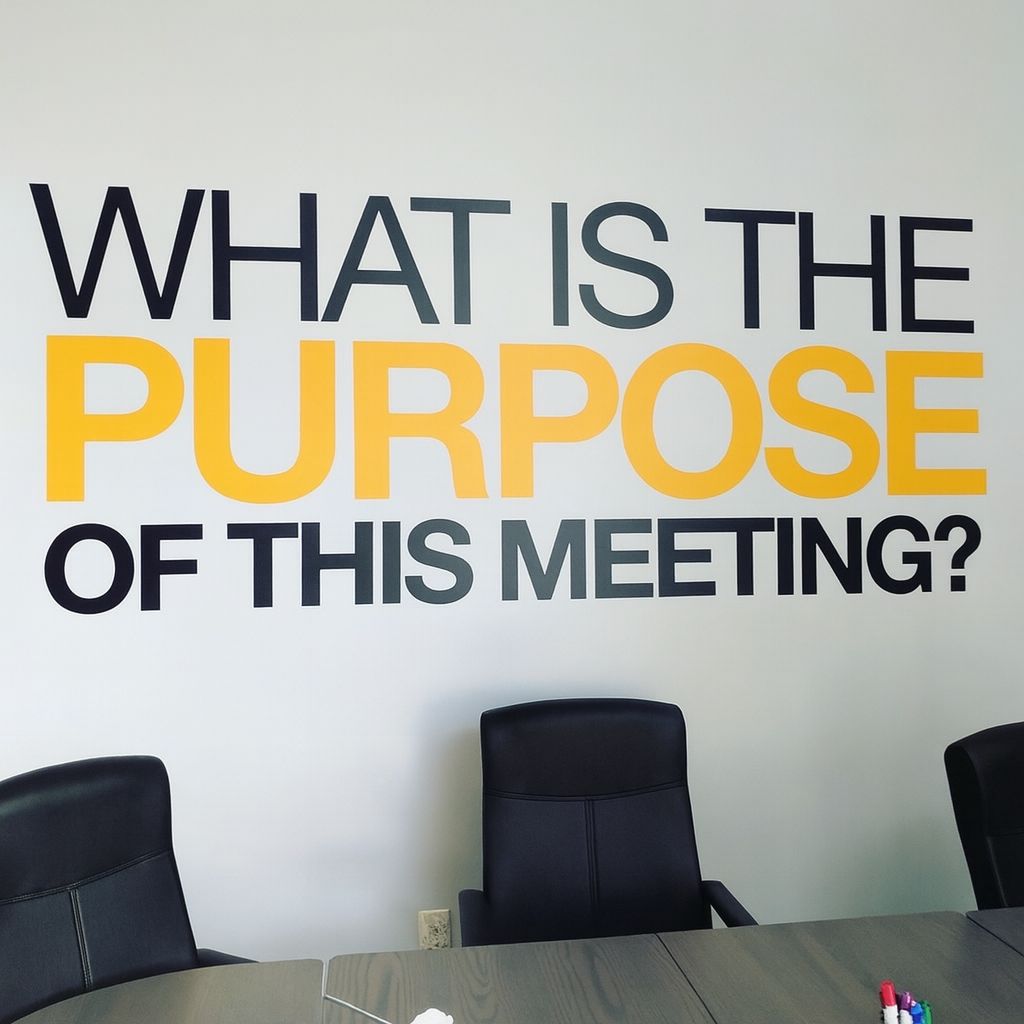- MONDAY, THOUGHT.
- Posts
- First Principles, First Clarity
First Principles, First Clarity
Relearning the basics: in-person brilliance, focused time, and the conditions that make extraordinary work possible.
I’ve been thinking a lot about how I think.
Last week I wrote about meta prompting, stepping back and seeing the pattern behind the pattern.
But once I zoomed out, something unexpected happened: I started zooming all the way in.
Into the fundamentals.
Into what remains true when I strip away assumptions, habits, and narratives I’ve carried for years.
This lens of first principles hasn’t just helped me make decisions, it’s pushed me to challenge some of my own long-held beliefs.
Remote vs. in-person work.
How much structure I need vs. how much serendipity I crave.
What kind of projects actually energize me vs. what simply fills the calendar.
And the more honest I am with myself, the clearer something becomes:
The most meaningful chapters of my career — personally and financially — all happened when I was in the room with brilliant people, building extraordinary things together.
That’s the work that lights me up.
That’s who I am.
And that’s what I want to design my days around.
So I’m going back to first principles: optimizing my time, my workflow, and Ampersand Consulting itself to maximize the conditions where great people can do extraordinary work, together and in person.
Because when I remove all the noise, that’s the truth that remains.
When I strip everything back to first principles, a surprising pattern emerges: almost every breakthrough moment in my career came from being physically present with brilliant people. Not on Zoom. Not through Slack. But shoulder to shoulder. A whiteboard smudged with half-formed ideas, a table covered in notebooks, someone pacing as they think out loud. That’s where extraordinary work has always happened for me.
Somewhere along the way, I started drifting from that truth. Partly because the world shifted. Partly because remote tools became so good. And partly because I told myself a story about “efficiency.” That optimizing for flexibility must also mean optimizing for impact. But when I look honestly at the moments that shaped me, the pattern is undeniable: the magic was always in the room.
First principles thinking forces you to confront what’s actually working, not what sounds good or looks modern. And for me, the core truth is that the work I’m most proud of, the work that moved clients, elevated Ampersand Consulting, and energized me, was built with people who showed up, leaned in, and created something new together.
This realization has pushed me to rethink my own assumptions about leadership and design my work week very differently. Less scattering. More intention. Less reacting. More creating environments where brilliant people can collide, challenge each other, and build things that neither one could have imagined alone.
And the clarity that comes from this is grounding: if extraordinary work is my life’s work, then I need to engineer my days around the conditions where extraordinary work is possible.
⚡ Quick Hits
OnePlus 15 Goes All-In on AI
Why it matters: Consumer devices are now competing on AI performance, not camera megapixels. OnePlus just announced the global launch of the OnePlus 15 (Nov 13), pushing dedicated AI silicon into the mainstream.
→ read moreCisco Brings AI to the Edge
Why it matters: Cisco’s newly announced platform puts real-time AI inference closer to where work actually happens — stores, factories, hospitals. Enterprise AI is moving from cloud-only to everywhere.
→ read moreAnthropic’s Massive AI Infrastructure Bet
Why it matters: Anthropic just revealed a multibillion-dollar investment to scale data centers and model infrastructure. Deep-tech players are building physical “AI plants,” treating compute like the new oil.
→ read moreHyperconnectivity Is Redrawing Our Social Lives
Why it matters: A keynote at a multinational conference last week explored how digital dependence and algorithmic interaction loops are reshaping identity, attention, and emotional regulation. The psychology of tech is now a first-order design problem.
→ read more2025 Becomes a Turning Point for Humanoid Robots
Why it matters: IBM published a breakdown of why robotics is accelerating faster than expected — standardizing locomotion, sensors, and training pipelines. Humanoids are moving from research labs to factories and homes.
→ read more
🛠 Tool
Teams are coming back together, but their thinking still needs to live digitally. Miro AI bridges both worlds.
Why it’s useful:
In-person collaboration is fast and chaotic in the best way. Miro AI automatically groups ideas, generates diagrams, extracts text, and organizes the room’s thinking so you can keep momentum instead of slowing down to document it.
You stay fully present in the room.
Miro does the digital cleanup.
Why I’m highlighting it:
If the future of my own work leans heavily on being in the same room with brilliant people, I want tools that amplify that energy, not tools that force everyone back behind a screen.
🪨 The Pebble
Over the next five days. Not in theory. In practice…
What’s one assumption about how your team works best that you could test?
📊 Poll
Where does your best work actually happen? |
Quick ask: I’d love to learn more about you. It only takes 2 minutes, and it helps me shape Monday Thought around what matters most to readers like you. Take the survey.
✉️ Join the conversation, subscribe at MondayThought.com.
Weekly reflections on the human side of technology. Fresh thinking at the edge of work, AI, and life.
[#28] 😊 Weather is cool, the sun is out, the streets are buzzing with the hum of the snowbirds.
Have a great week everyone!

Reply